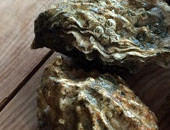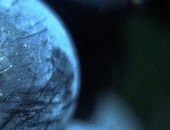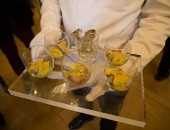Undeniably the weather plays a major role in deciding the quality of a vintage but what an examination of climatic factors won't tell you is how a wine may taste. It won't explain why one domain in a particular appellation mastered a difficult vintage whilst another produced coarse, dry wines. It won't provide an answer to why the driest year for fifty years badly affected one variety, whilst down the road a vineyard sustained better fruit. It might be misleading to know that hail decimated thirty percent of a chateau's crop, because next door there was none. The hottest year since 1900, with record scalding hot days of 39ºC (102ºF) in June scorched the crop, but not everywhere. Ultimately, the weather is a generalisation which the terroir manages in its wisdom.
A normal year starts with a mild, cool and wet winter, followed by a warm spring, warm to hot (but not too hot) summers and a dry autumn. In some respects Bordeaux 2011 conformed to a good vintage: early budbreak, short phenological growing season (budbreak to harvest), early harvest but the summer was far from ideal - rather damp and cool and early September brought storms and more difficult conditions. There were also many haphazard crop-annihalating conditions - downpours, hail, scorching sun and outbreaks of rot in different parts of the region.
Bud break (when the vines start to shoot) was already two weeks earlier than in 2010. Higher than average temperatures reigned for March-June. April 2011 was the warmest since records began in 1900, with average temperatures 5-6ºC higher than usual and the water deficit in April was 86% and maximum temperatures hovered around 25ºC to 30ºC (77ºF - 86ºF) for most of the month. May was even hotter, and dryer - only May, 1922 was hotter. Flowering was two weeks ahead of normal patterns since records began. The lack of rainfall was an all-time record extending back to 1945. This lack of rainwater along with higher temperatures stressed the vines very early in their development. The scorching heat which arrived at the end of June was the death knell for some fruit which were in any case attempting to ripen in quasi-drought conditions. Vine growth had ceased two weeks earlier than usual because of hydric stress and this was too much for the Merlot (on gravel and sand), younger vines and those which had been subject to an early 'effeuillage' (de-leafing) - a techinique used by vignerons for ensuring even ripening of the berries. The clay soils of certain appellations, permitted a better balance - clay retains moisture.
July was cooler than usual, producing less sunshine and more rain than on average. A combination of factors which lead to widespread uneven grape ripening which was poetically referred to as the 'Harlequin' effect but also complicating still further the mix by adding to the dilution of some of the berries particularly Merlot and Petit Verdot on the left bank. A massive process of sorting out the unripe berries was required. This was hardly the weather for a great vintage. In other words the quality is 'heterogenous' and each estate needs to be judged on its own merits.
More worryingly for winegrowers in Bordeaux and elsewhere is an apparent unpredicted consequence of climate change known as the 'Arctic dipole anomaly', replacing the usual weather patterns prevalent in the winter time in northern Europe. This phenomenon permits more warmer weather into the arctic which scientists now predict will be ice-free in the summer by the year 2030 increasing the likelihood of its influence and its impact of drawing colder, drier air into Europe. This shift was not orginally predicted by earlier climate models. Whilst Bordeaux at this time (April 2012) is finally receiving some much needed rain the rainfall deficit as compared to an average year remains substantial (only 50% of anticipated precipitation) storing up problems for the new vintage.
Undeniably the weather plays a major role in deciding the quality of a vintage but what an examination of climatic factors won't tell you is how a wine may taste. It won't explain why one domain in a particular appellation mastered a difficult vintage whilst another produced coarse, dry wines. It won't provide an answer to why the driest year for fifty years badly affected one variety, whilst down the road a vineyard sustained better fruit.
.../continued...you need to upgrade your subscription if you wish to read this content.
Undeniably the weather plays a major role in deciding the quality of a vintage but what an examination of climatic factors won't tell you is how a wine may taste. It won't explain why one domain in a particular appellation mastered a difficult vintage whilst another produced coarse, dry wines. It won't provide an answer to why the driest year for fifty years badly affected one variety, whilst down the road a vineyard sustained better fruit.
.../continued...you need to subscribe to be able to view content from Fine Wine magazine.
Subscribe HERE to Fine Wine magazine to read the rest of this content or log yourself below in if you are already a member and you will be returned to this page.
'%%previous%%')); } ?>










